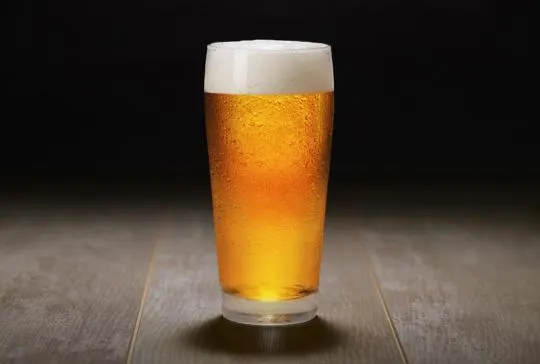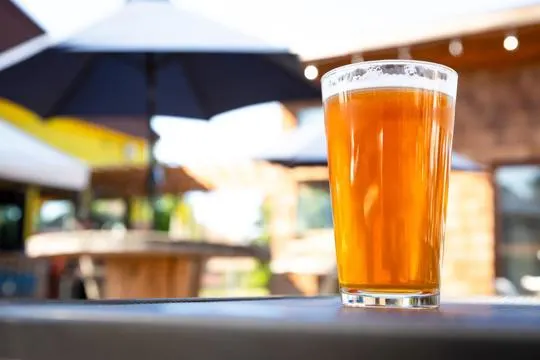Summary of key points
The main difference between pale ales and IPAs lies in their hop intensity and bitterness levels. Pale ales are generally lighter in flavor, with a balance of malt and hop notes, while IPAs have a stronger hop presence, resulting in a more bitter taste. Additionally, IPAs often have higher alcohol content than pale ales.
The history and origin of these two beers also differ – pale ales have been around since the 18th century, while IPAs were created in the 19th century as a way to preserve beer during long voyages. Ultimately, the choice between pale ales and IPAs will depend on personal preference and how much hop flavor one prefers in their beer.
Pale Ales and IPAs are brewing rock stars. Both pack a punch in the flavor department.
Here’s the lowdown. Pale Ales are like your chill, easygoing buddies. IPAs? The bold, adventurous ones who crank the hop dial up to eleven.
Our love affair with them? It started at our first sip.
We’ve had debates over which is better. Laughs were shared, preferences declared. In this article, we bridge the gap.
Short, sweet, and to the point. Like a good Pale Ale or an IPA, depending on your taste.
What are Pale Ales?

Pale ales are an iconic beer style, originating in England.
These beers have a golden or pale color, derived from lightly kilned malt.
The flavor of pale ales is usually balanced, with notes of caramel, biscuit, and sometimes fruity or floral hops.
Plus, they have a moderate level of bitterness compared to other beer styles.
Pale ales can be strong or sessionable, depending on the alcohol content.
Their unique color and flavor profile come from the fermentation process.
They are often brewed with top-fermenting yeast at warmer temperatures than lagers, leading to quicker fermentation and fruity esters.
There are plenty of sub-styles of pale ale, like American pale ale, English bitter, and Belgian pale ale.
These beers may have different ingredients, hop profiles, or brewing techniques.
In conclusion, pale ales offer something for all beer lovers.
Whether you like English style pale ales or American variations, there is an array of flavors to explore and appreciate.
What are IPAs (India Pale Ales)?

India Pale Ales (IPAs) are a type of beer first brewed in England during the 18th century.
They were made with higher alcohol content and more hops to survive long journeys to India.
IPAs are known for their bold hop flavor, bitterness, and alcohol content.
The intense hop aromas and flavors of IPAs can vary from floral and citrusy to piney and resinous.
Their prominent hop presence and higher alcohol content make them appealing to some beer lovers.
There are different variations of IPAs, such as American IPAs, English IPAs, and Double IPAs (Imperial IPAs).
American IPAs have more intense hops than English IPAs, while Double IPAs take the flavor and alcohol content even further.
This allows brewers to experiment while staying true to the IPA style.
IPAs are popular among craft beer enthusiasts.
Their unique flavors and versatility make them a favorite choice for those looking for a flavorful beer experience.
Whatever your preference, there’s an IPA out there for you.
Differences Between Pale Ales and IPAs

Beer fanatics are often curious about the slight contrasts between beer styles, like Pale Ales and IPAs.
Both are hop-forward beers, but they boast distinct properties.
Origin and History
Pale Ales and IPAs have an interesting past.
They are symbols of the craft beer revolution, each having their own fans.
Pale Ales come from 18th century England.
New malting methods allowed for lighter-colored beers.
These ales were called “pale” compared to stouts and porters.
They have a mix of malt sweetness and hop bitterness and became popular.
IPAs have an exciting story.
They were made in India during British rule.
To survive the voyage from England, brewers added extra hops and raised the alcohol content.
This created a flavorful beer.
These two styles have grown differently.
Pale Ales have moderate hop bitterness with citrus, pine, and floral notes.
IPAs have high hop content and higher alcohol.
Variations have appeared too.
American Pale Ales have a cleaner yeast and strong hop aromas.
West Coast IPAs have resinous, long-lasting bitterness.
New England IPAs have juicy hop flavors and hazy look.
Pale Ales and IPAs have a common beginning yet have distinct styles.
Fans of both can appreciate their history and continued success.
Ingredients Used in Brewing
To make beer, you must choose the right ingredients.
Grains, hops, yeast, and water will determine if the beer is pale ale or IPA.
Pale ales call for a mix of malted grains like barley, wheat, or rye.
These grains give the beer color and sweetness.
Plus, hops are added for bitterness and a range of scents like floral or citrus.
IPAs use more hops than pale ales, resulting in a strong bitter flavor.
Hops come in a variety of types that can provide piney or tropical fruit notes.
Pale ales and IPAs have some similar ingredients, but their amounts vary.
Pale ales have an even balance between malt and hops.
On the other hand, IPAs have more hops and a bold flavor.
Hop Profiles and Bitterness Levels
Hop profiles and bitterness levels set pale ales apart from IPAs.
Hop profiles refer to the mix of hop varieties used in the beer, and affect its aroma and flavor.
Bitterness levels indicate the amount of hops used, and vary between pale ales and IPAs.
IPAs usually have higher bitterness levels.
This gives them a bolder and hoppier flavor.
Knowing the differences between hop profiles and bitterness levels helps beer fans pick a beer that suits their tastes.
Alcohol Content and Strength
When it comes to pale ales and IPAs, there’s one crucial factor that sets them apart: alcohol content and strength.
Pale ales usually have 4-7% alcohol, while IPAs are stronger at 5-7.
5%.
The brewing process and ingredients explain this difference.
Pale ales are brewed with a mix of malt and hops, giving them a smooth and flavorful taste.
But IPAs are heavily hopped during brewing and fermentation, making them more robust and bitter.
Flavor is another distinguishing factor.
Pale ales often have caramel, citrus, and floral flavors.
IPAs tend to be very hoppy, with piney, resinous, fruity, or tropical notes.
It’s all personal preference.
But when enjoying these beers, remember to consider their alcohol content.
So next time you’re deciding between pale ale and IPA, think about your taste and your desired level of alcohol strength.
Similarities Between Pale Ales and IPAs

Pale ales and IPAs appear similar.
Both are a hop-forward style of beer, with a hint of citrus.
But pale ales are usually milder in hops than IPAs.
The ingredients are similar: malt, water, yeast, and hops.
Yet, IPAs contain more hops, making it more bitter.
Even so, variations exist, depending on the brewery or region.
In the end, it’s all about which beer you prefer – a pale ale, or an IPA.
Taste and Flavor Comparison
Pale ales and IPAs are two beers that look alike.
But, they have different tastes and flavors.
Both have a strong hop bitterness.
But pale ales have a milder one.
The aroma of pale ales is fruity and floral, whereas IPAs have more piney and citrusy aromas.
Pale ales are balanced between maltiness and hops.
IPAs are more hop-dominant with bold and bitter flavors.
IPAs have a higher alcohol percentage than pale ales.
This adds depth and intensity to the flavor.
Food Pairings for Pale Ales and IPAs
Pale ales and IPAs are crowd favorites.
With food pairings, there are differences to keep in mind.
Pale ales tend to be lighter and less bitter.
Grilled meat, seafood and salads go well with it.
IPAs are hoppier and have more bitterness.
Spicy or strong-flavored food can balance this out.
Strong cheese also works.
For more specific pairings, citrusy pale ales go great with lemons or herbs.
Fruity and floral IPAs can be complemented by tropical fruits or coriander.
At the end of the day, it all comes down to personal preference.
Experimenting is the key to finding a perfect match.
Whether you prefer pale ales or IPAs, there’s sure to be a great combo.
Popular Brands of Pale Ales and IPAs
When it comes to popular beer brands, some names stand out.
These beers have become famous for their flavor and craftsmanship.
Sierra Nevada is one of those.
This brew is based in California and has been producing Pale Ales since 1980.
Their Sierra Nevada Pale Ale is known for its hop-forward taste and balanced bitterness.
It’s now a favorite among beer drinkers.
Founders Brewing Co.
from Michigan is also famous for their Pale Ales.
Their All Day IPA is a session beer with citrusy hop aromas and a malty backbone.
Stone Brewing Co.
from San Diego is a well-known name in the IPA category.
Their Stone IPA offers strong hop flavors and hints of pine and citrus.
Dogfish Head Brewery from Delaware is also noted for their IPAs.
Their 60 Minute IPA has a mix of hops and malt, creating an interesting yet easy-to-drink beer.
These are just some of the brands.
There are many others crafting delicious Pale Ales and IPAs, like Lagunitas, Bell’s Brewery, and Ballast Point.
So next time you’re at your local beer spot, don’t be shy.
There are plenty of Pale Ales and IPAs to choose from.
Conclusion
Now that we have explored the differences between Pale Ales and IPAs, it is important to remember that the most important consideration when choosing a beer is personal preference.
Ultimately, what matters most is that you find a beer that you enjoy drinking and are comfortable recommending to friends.
Pale ales and IPAs each offer a unique set of flavors and aromas for those looking to explore new styles of beer.
If you’re just getting into craft beers or want to venture outside of your traditional lager routine, sampling both pale ale and IPA types could be an exciting next step towards discovering the beverage industry’s breadth of offerings.
It may take some trial and error before settling on one favorite (or rotating between several favorites), but no matter how you choose to embrace the diverse world of craft beers, drinking them should always be a fun experience.

Leave a comment